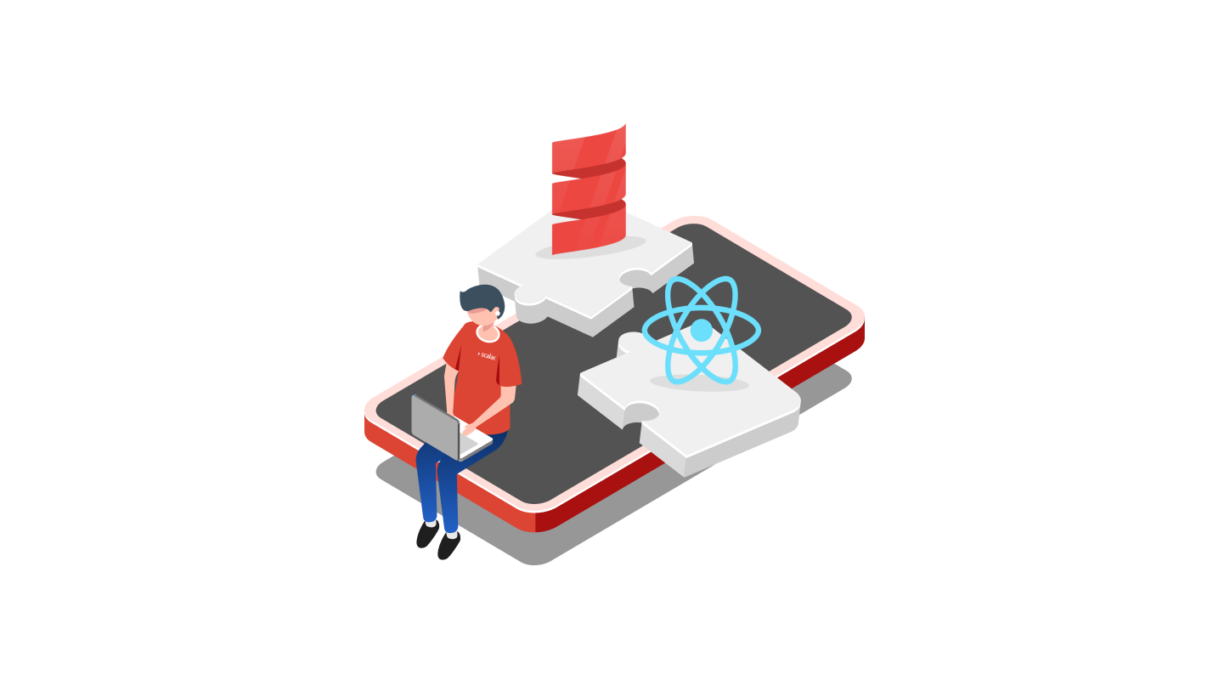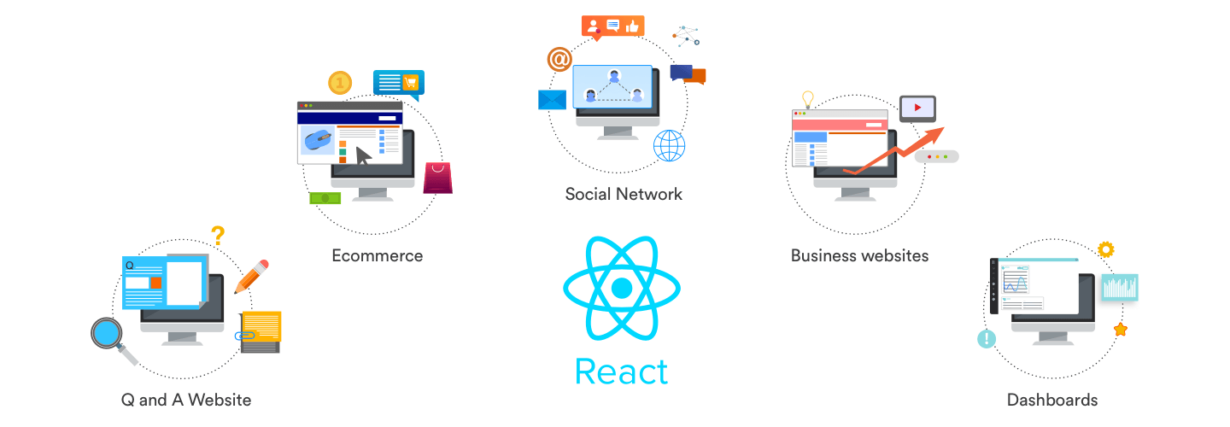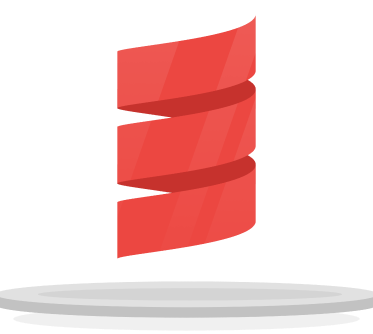
React.js meets Scala – backend for React Native

The React library has been building its recognition and functionality already for eight years. We know that it is very beneficial for frontend developers, but what role does the Scala programming language play in this? Can Scala be a backend for React Native?
React debuted over eight years ago on March 1, 2013. The latest version was released a few months ago, on March 22, 2021, React.js 17.0.2.
React is a JavaScript library for creating user interfaces (UIs). Jordan Walke, the creator of the library, is a Facebook software developer. The primary purpose of creating this library was to improve the platform quality, make it dynamic and innovative.
Innovation could help maintain an even pace with the update and a higher level of user interaction with Facebook. Also, React was implemented on Instagram in 2012, which was a year later than on Facebook.
The interest in React is constantly growing; in 2018, in the StackOverflow survey, the library took third place in the context of “Framework, Libraries, and Tools.“
React Native is compatible with Android or IOS and allows for more creative improvement of mobile applications.
But how can you exactly use React?
React library is one of the more straightforward functional solutions. Because of this, it has gained popularity and many programmers’ followers.
You can choose between two React components:
- Functional component – returning JSX
- Class-based components: Declared via the ES6 class.
React benefits! What should you pay the most attention to?

- The simplicity of updating and administration: The React library is easy to update and manage your applications. Components can be used multiple times and updated or edited simultaneously.
- Virtual House – Equipping React with a virtual vDom implementation allowed for more efficient monitoring of user-facebook interactions and regular data updates. vDom is equipped with an algorithm that provides information about changing the target Virtual House.
- Helpful in Debugging – React as a browser extension (React Developer Tools) allows an overview of the Home components, including the status, component and property hierarchies.
- React community – The popularity of the library gathered many supporters. This means a large number of tutorials and information available on the web. React enables quick and easy learning for beginners and seasoned developers.
- Transforming React into applications from the website. – For starters, using React greatly simplifies the overall component scripting process. By using JSX, a free syntax extension, HTML quoting and subcomponent rendering becomes a lot easier. Also, thanks to the writing shortcuts, source codes become much cleaner and simpler when you’re writing a React createElement.
- JSX and React – JSX allows you to write JavaScript in the React library from HTML. At the same time it’s providing more specific information about errors and protection against injection attacks.
React is a library that helps you manage your applications properly and modernly, maintaining their innovation, functionality, and simplicity.
In the list of companies that use React, we can find:
More about apps built with React Native: here
Forms of Scala and React
This non-obvious way is Scala.js, which implements Scala and can compile its code into JaVaScript. Thus, it is two-sided operational and allows web applications to develop using both of these language tools.
It means that you would be able to use Scala directly in React, but David Barri decided to combine these things into one, creating Scalajs-react. This library provides the complete set of wrappers that React needs to ensure security and functionality in Scala.js. It also provides Callback – repeatable calculations, possible to compose, which work in cooperation with React.
What can we find in a backend based on Scala Stack?
• Monix Task to manage side effects
• http4s + tapir for HTTP API disclosure
• access to the database
• pure config for configuration
• circe for JSON encoding
The most important advantage of the above libraries is their independence. It is possible to change them quickly, avoiding massive errors. What is more, the cat-effect provides cooperation between them, which is responsible for defining type-classes.
Bootzook’s backend has assumed its maximum purpose functionality during the implementation and use of the available components.
What are other compatible tools with React and Scala?
If we look more clearly, we can see a tool like Hook, which is a mechanism that allows the application to intercept things such as computer mouse and keyboard movements or messages. Such action operates with a specific name, which is a procedure hook.
What other functions does Hooks bring us?
- Message monitoring (debugging aid)
- Support for the F1 key – the help key
- Efficient support for macro recording and playback
- Mouse and keyboard simulation
- Possibility to implement the application to CBT
How can we use Hooks and React?
During a discussion about the cooperation between React and Hooks, you should also pay attention to the Slinky 0.6.0 framework. Slinky is used to write applications in React and React Native in Scala with an API. The advantage of this framework is support for React Hooks, which allows you to improve type-safety while creating components with the help of the new Tag API.
React Hooks allows you to write applications more clearly and shortly. But why? It’s because the approach to writing components is entirely different. The Slinky 0.6.0 framework provides a range of Hooks APIs and a few functional features that allow you to build applications with React Hooks.
What are your benefits from Slinky?
Strictly speaking, Slinky ensures that the use of your time is kept simple and optimized by allowing developers to write type-safely with the smallest schema. Slinky is equipped with the ECMaScript6 (Es5) API. It enables you to define component classes in Scala, which can later be transformed into JavaScript and linked to React.
Creating a new component and building a simple interface can be a challenging task. But this is where the Slinky framework comes into play, which includes the @reactinterface macro annotation API.
While using the Scala language, we acquire the option of including compile phases and adding custom behavior, for example, AST or generating custom files.
The library based on the Scala language – Scala.meta, is a solution that could be chosen to create a high-level and innovative API for code transformation without using templates. To do this, it is enough to generate classes in Slinky, which transform into annotations needed for the @react component code.
Benefits?
A more minor and more balanced component compared to JavaScript code!
What’s the best backend for React Native?
Is it worth choosing the Scala language when developing web applications?

At first glance, JavaScript seems to be the ideal language to connect to React or React Native. However, after a deeper analysis, it turns out that the Scala language may also be a satisfactory solution.
The resulting libraries, such as Scala.js or Scala.meta, ensure compatibility between React and the Scala language, thanks to an innovative feature. Scala’s language is unclouded and straightforward, which can be helpful when building a user API.
It is also a language that combines functional and object-oriented features, expanding the range of possibilities. Backend using Scala language, when properly used, shows maximum functionality during implementation or use of components.
See also:
- ReScript for React Development
- Apps built with React Native – Uber Eats and Airbnb
- Why you may want to use React
- Meet Immer.js – the immutability helper
- Building application with AI: from concept to prototype
- Frontend app-building dilemma: Custom solution or using a library
- React.js meets Scala – backend for React Native










